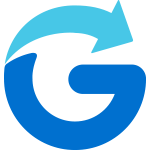The middle and last miles are changing quickly and simple tracking solutions are not enough anymore. It’s important to look for solutions that truly engage your customers – allowing you to stay a step ahead of the competition. Here’s our guide on how to use proactive communication to keep your customers engaged every step of the journey, resulting in reduced costs and improved satisfaction.
Tip 1
Timely, updated insight demonstrates respect for customers’ time and empowers them to make necessary changes.
Proactive service can be complicated, convoluted and resource-intensive. Even deciding where to start can be overwhelming. It requires a commitment to exceeding customer expectations, and a combination of technology and processes that monitor customer behavior, synthesize data to identify issues and effectively predict customer needs even before they’re aware of them.
Add connected, intelligent machines to the “customer” list, and the complexity is exponential. On the other hand, proactive communication about service can be much more straightforward. It requires engaging and informing customers throughout the complete service lifecycle to reduce the friction from missed field service connections. Providing timely, updated insight demonstrates respect for customers’ time, and empowers them to make necessary changes.
Tip 2
Let customers know you’re on the way and when you’ll arrive… huge impact with relatively little effort.
You can implement proactive communication strategies to improve customer engagement and reduce “Where’s my __?” calls and customer no shows, resulting in lower costs, higher Net Promoter Score (NPS) and accelerated revenue.
Proactive customer communication best practices will enhance any field service or delivery operation. Let customers know you’re on the way and when you’ll arrive; they’ll reward you by being there and being prepared. You’ll make a huge impact with relatively little effort.
Best-in-class organizations create digital, customer-facing web experiences, and use notifications to drive customers to these branded, interactive experiences. Read on to learn how
- Set expectations early. Tell them how you’ll communicate immediately upon scheduling a service or delivery. Send a confirmation explaining what information they’ll receive, in what format and how it will help.
- Your channel or mine? Find out right away which channel(s) customers prefer – email, SMS, phone or a MyAccount app? Notifications are only helpful if customers receive them!
- Provide a useful ETA. Everything hinges on sharing an actionable arrival time. A variety of sources – from the field agent’s phone, telematics devices, sensors, in-vehicle GPS or cues from a FSM mobile client – can provide a reliable location data stream. Link live location data with a geocoded customer address to calculate the ETA and recalculate continuously. If the ETA changes significantly, alert customers immediately. Useful ETAs are communicated early, updated often and accurate. When unexpected changes occur, a refreshed ETA can help ease tension. Customers will tolerate delays when given adequate notice to adjust their schedules.
- Create a CX hub. One-way alerts aren’t enough. Best-in-class organizations create digital, customer-facing web experiences, and use notifications to drive customers to these branded, interactive experiences. This is the focal point of your proactive communications strategy. Don’t try to say it all in an SMS. Lead customers to a CX hub, then give them control. Just as a field representative’s day can change unexpectedly, so can a customer’s. Include appointment and agent details, and empower customers to chat, reschedule, cancel or get more information. This will deflect costly calls, promote self-service and minimize extra truck rolls.
- Update, but don’t disrupt. Even proactive appointment reminders like phone calls and texts aren’t durable. Once the field dynamics change (they always will), your initial ETA becomes obsolete. Constantly refresh the customer appointment viewer, even passively. Use strategic push notifications to alert customers about major changes to service events. Let them know about an assigned technician (with photo) or an hour-long delay, but leave them alone otherwise.
- “Tell me how you really feel.” Solicit feedback immediately. Assess whether your service model is working. Direct negative responses to customer care for fast follow up and prompt happy customers to spread the word on social media or refer a friend
Measurable Results
Companies around the world and across industries that leverage these best practices get big results, quickly.
- A Southern California furniture retailer saw an immediate 10 percent drop in customer not-at-homes by sending one SMS with a link to a live tracker and ETA countdown.
- A European cable company saw up to a 14-point NPS improvement in 8 weeks by implementing a more complete customer notification process with iterative updates culminating in a live map technician view.
- A national U.S. cable operator saves tens of thousands of dollars monthly in wasted truck rolls while increasing monthly revenue by preventing last-minute cancels and reschedules.
Service providers who connect early and often (in an unobtrusive manner), use customer-defined channels and provide continuously updated information to create empowered customers. Empowered customers can effectively coordinate their schedules, are prepared for their appointments and reschedule early when needed, before a truck has rolled.


